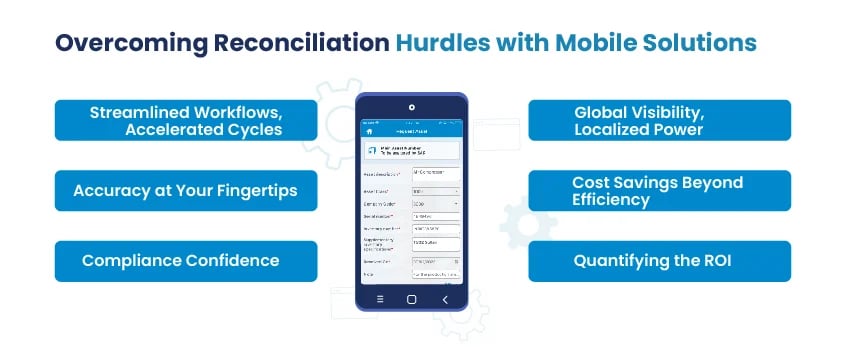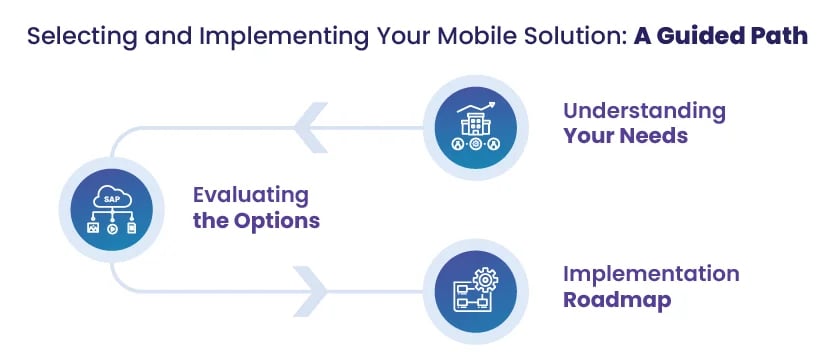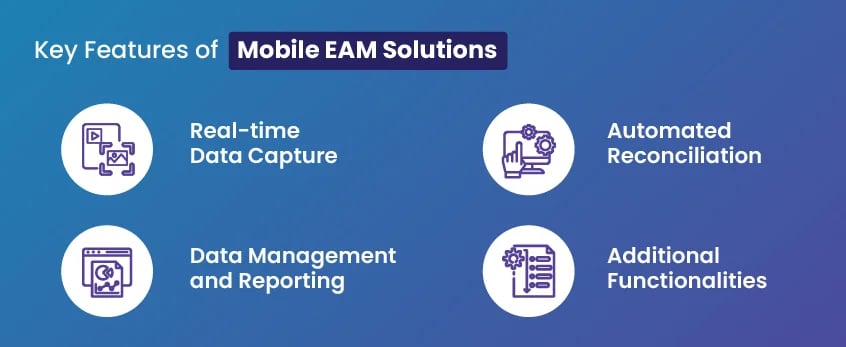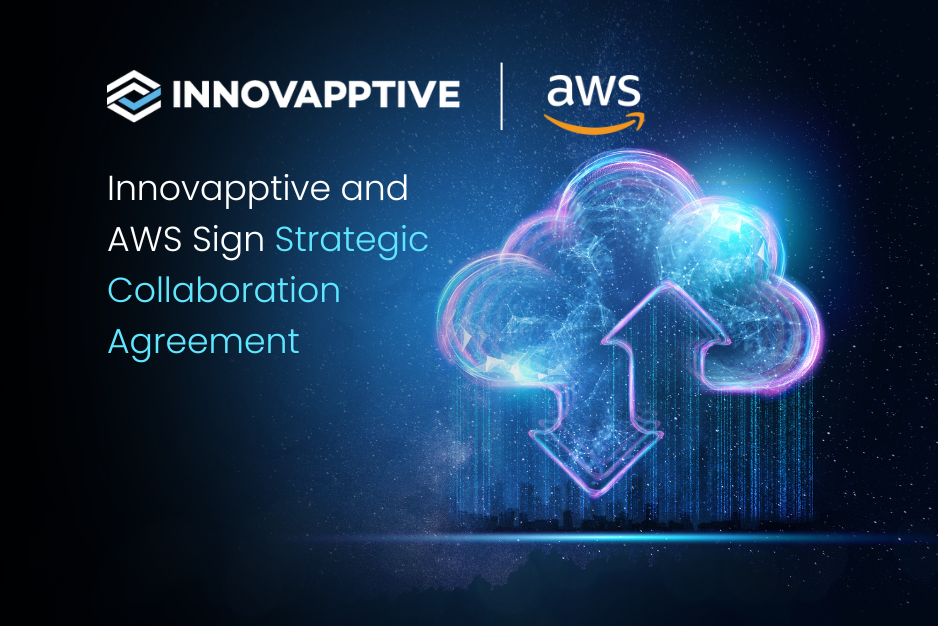Reconciling Fixed Assets Ledgers With a Mobile Enterprise Asset Management System

The Importance of Fixed Assets in the Enterprise
In the complex world of enterprise finance, fixed assets stand as the unwavering foundation. Representing long-term investments that fuel daily operations and future growth, their effective management directly impacts financial stability, operational efficiency, and regulatory compliance. From the towering factory machinery churning out products to the intricate IT infrastructure powering digital transformations, every tangible asset plays a crucial role in an enterprise's success story.
The sheer magnitude of fixed assets within enterprises necessitates meticulous attention. According to GlobalData, the global fixed asset market is projected to reach a staggering $73.8 trillion by 2027, highlighting their pivotal role in the global economy. Further emphasizing their importance, PwC reports that fixed assets typically comprise an average of 60% of total enterprise assets, demonstrating their undeniable influence on financial health. However, the consequences of inaccurate fixed asset records can be severe. The American Institute of CPAs warns that errors in these records can lead to financial statement errors exceeding $40 billion annually, potentially jeopardizing investor confidence and regulatory compliance.
Enterprise-Specific Challenges: As enterprises scale and diversify, managing their fixed asset portfolios becomes increasingly complex. Unlike smaller organizations, they face unique challenges:
- Geography Spreads the Assets: Managing geographically dispersed assets across multiple locations adds a layer of complexity. According to Gartner, 30% of large enterprises have assets in over 20 countries, necessitating efficient tracking and reconciliation across diverse regions.
- A World of Asset Diversity: Enterprises often deal with a wider variety of asset types, from specialized manufacturing equipment to complex IT infrastructure and transportation fleets. Each asset type possesses unique tracking requirements and lifecycles, demanding adaptable management strategies.
- Regulatory Maze to Navigate: Stricter regulatory requirements governing depreciation, valuation, and reporting, such as the Sarbanes-Oxley Act and International Financial Reporting Standards, add another layer of complexity for multinational enterprises to navigate.
Effectively managing such intricate and geographically dispersed fixed asset portfolios necessitates robust processes and innovative solutions. Traditional, manual methods often fall short, leaving enterprises vulnerable to inaccuracies and inefficiencies.
Reconciliation: A Critical but Painful Process
While fixed assets are vital, ensuring their accuracy and consistency across various ledgers is crucial for sound financial reporting and informed decision-making. This process, known as reconciliation, aims to identify and resolve discrepancies between asset records in the general ledger, subledgers, and physical asset records. However, traditional reconciliation methods often resemble an obstacle course rather than a streamlined path.
Imagine mountains of paperwork, endless spreadsheet iterations, and countless physical asset counts – that's the reality of traditional reconciliation. Processes are:
- Time-consuming and labor-intensive: Manual data entry, paper trails, and physical asset verification eat up valuable employee time and resources. Deloitte reports that manual processes can extend reconciliation cycles by weeks or even months.
- Prone to human error: Typos, missed updates, and data inconsistencies due to manual data entry lead to inaccurate records and unreliable financial reporting.
- Lacking real-time visibility: Delays in data capture and manual verification create blind spots, hindering timely identification and resolution of discrepancies.
The Impact of Inaccuracy
The consequences of inaccurate reconciliation go far beyond wasted time and effort. They can significantly impact an enterprise's financial health and compliance:
- Overstatement or understatement of assets: This affects financial reporting, depreciation calculations, and tax liabilities, potentially misrepresenting the company's financial position.
- Compliance violations and potential penalties: Failing to adhere to regulatory requirements like Sarbanes-Oxley can lead to hefty fines and reputational damage.
- Difficulty in accurate budgeting and forecasting: Inaccurate data hinders informed decision-making about future investments and asset management strategies.
Enterprise-Specific Roadblocks
As enterprises scale, the reconciliation challenge intensifies due to complex workflows and diverse asset portfolios:
- Siloed Data and Complex Workflows: Data might reside in different departments, creating silos and hindering cross-departmental collaboration. Integrating data from various ERP systems and subledgers becomes a complex task.
- Managing Diverse Asset Types and Locations: Tracking and verifying geographically dispersed assets across diverse types, from manufacturing equipment to IT infrastructure, becomes logistically challenging and time-consuming with manual processes.
- Global Compliance and Audit Readiness: Maintaining consistent documentation and adhering to diverse regulatory requirements across different countries adds complexity to the reconciliation process, requiring meticulous attention to detail.
Scaling the Challenge: Enterprise-Specific Roadblocks
Imagine navigating a vast labyrinth filled with tangled workflows, diverse assets scattered across continents, and regulatory hurdles from various countries. That's the reality of enterprise-level fixed asset reconciliation with traditional methods. This chapter delves deeper into the complexities faced by large organizations:
Enterprise Resource Planning (ERP) systems, while powerful, often don't fully integrate with departmental asset databases. This creates data silos, where information gets compartmentalized and cross-departmental collaboration becomes challenging. Reconciling data from multiple sources becomes a time-consuming puzzle, hindering comprehensive asset insights.
Beyond Borders: Managing Asset Dispersion: Geographically dispersed assets add another layer of complexity. Imagine tracking manufacturing equipment in remote factories, IT infrastructure across continents, and transportation fleets constantly on the move. Manual processes become inefficient and prone to errors, creating blind spots in asset visibility and control.
Compliance Tightrope Walk: Navigating the global regulatory landscape can be daunting. Enterprises must adhere to diverse requirements for depreciation, valuation, and reporting, such as the Sarbanes-Oxley Act and International Financial Reporting Standards. Ensuring consistent documentation and compliance across various jurisdictions adds another layer of complexity to the already intricate reconciliation process.
The challenges of enterprise-level fixed asset reconciliation are real, but the solution exists. Mobile technology offers a transformative approach, empowering organizations to overcome inefficiencies and achieve accurate, streamlined reconciliation. Chapter 4 dives deeper into how these solutions work and unlock the power of mobile fixed asset management.
Introducing Mobile-First Fixed Asset Management
Traditional, manual-based reconciliation methods have held enterprises back for far too long. Errors, inefficiencies, and siloed data hindered progress, creating a roadblock to accurate financial reporting and informed decision-making. However, a new era has dawned, empowered by the transformative potential of mobile technology. Mobile-first fixed asset management emerges as a revolutionary solution, offering a paradigm shift in how enterprises approach reconciliation.

Real-Time Insights at Your Fingertips: Imagine instantly capturing asset information through user-friendly mobile apps, eliminating tedious paperwork and streamlining data collection. Mobile solutions empower employees across departments to update asset details, conduct physical counts, and upload photos directly from the field, ensuring real-time data accuracy and visibility. No longer are asset details trapped in spreadsheets or paper trails; they are instantly connected to a central database, accessible from anywhere, anytime.
Breaking Down Data Silos: Gone are the days of struggling with siloed data. Mobile solutions seamlessly integrate with existing ERP systems and departmental databases, creating a unified platform for all asset information. This eliminates manual data entry, reduces errors, and provides a holistic view of your entire fixed asset portfolio, regardless of location or department.
Offline Capabilities Conquer Geographical Barriers: Geographically dispersed assets no longer pose a challenge. Mobile solutions function seamlessly even in areas with limited or no internet connectivity. Data can be captured offline and automatically synchronized once an internet connection is available, ensuring uninterrupted data flow and accurate asset tracking, even across continents.
Compliance Made Easy: Regulatory burdens often weigh heavily on reconciliation processes. Mobile solutions provide built-in tools and automated features to streamline compliance efforts. From generating audit trails and reports to managing depreciation calculations and adhering to specific regulatory requirements, mobile technology simplifies compliance and mitigates potential risks.
The Power of User Adoption: Successful implementation hinges on user buy-in and training. Mobile solutions offer intuitive interfaces and user-friendly functionalities, making them readily accessible and adoptable by employees across all levels and departments. Engaging training programs and comprehensive support ensure seamless integration of the technology into existing workflows, maximizing its impact.
Mobile-first fixed asset management offers a revolutionary approach to enterprise-level reconciliation. By eliminating manual processes, integrating data seamlessly, and empowering employees with real-time capture capabilities, this technology paves the way for accurate, efficient, and globally compliant asset management. Chapter 5 explores the tangible benefits and quantifiable results achieved by enterprises who have embraced this transformative solution.
Overcoming Reconciliation Hurdles with Mobile Solutions
The challenges of traditional reconciliation methods are well-documented: errors, inefficiencies, compliance complexities, and siloed data hindering progress. In this chapter, we showcase how mobile-first fixed asset management translates its transformative potential into quantifiable wins for enterprises.

Streamlined Workflows, Accelerated Cycles: Imagine reducing reconciliation cycles from weeks to days, even hours. Mobile solutions achieve this by automating manual tasks, enabling real-time data capture, and eliminating the need for paper trails. A leading manufacturing company reported a 75% reduction in reconciliation time after implementing a mobile solution, freeing up valuable resources for other critical tasks.
Accuracy at Your Fingertips: Forget the stress of data inconsistencies and errors. Mobile apps enable instant validation and verification of asset data, minimizing human error and ensuring greater accuracy. A global logistics firm reported a 98% improvement in data accuracy after employing a mobile solution, boosting their confidence in financial reporting and decision-making.
Compliance Confidence: Complying with diverse regulations can be a daunting task. Mobile solutions offer built-in features like automated reporting, audit trail management, and depreciation calculations, ensuring adherence to specific requirements. A multinational healthcare provider reported a 20% reduction in audit findings after implementing a mobile solution, minimizing compliance risks and fines.
Global Visibility, Localized Power: Geographically dispersed assets are no longer a roadblock. Mobile solutions empower employees across locations to capture and update asset information in real-time, providing centralized visibility and control. A retail chain with locations across 40 countries reported a 30% improvement in asset utilization after implementing a mobile solution, optimizing resource allocation and reducing idle assets.
Cost Savings Beyond Efficiency: The benefits of mobile-first fixed asset management extend beyond efficiency gains. Reduced errors, minimized compliance risks, and improved asset utilization translate to tangible cost savings. A transportation company reported a 15% reduction in annual depreciation expense after implementing a mobile solution, optimizing asset lifecycles and controlling depreciation costs.
Quantifying the ROI: The return on investment (ROI) for mobile-first fixed asset management is substantial. A study by IDC found that organizations typically see an ROI of 200% to 300% within three years of implementing such solutions. These gains stem from improved efficiency, reduced errors, and optimized asset management.
The quantifiable results speak for themselves. Mobile-first fixed asset management isn't just a technological advancement; it's a strategic investment that empowers enterprises to overcome reconciliation hurdles, achieve greater accuracy and compliance, and unlock tangible financial benefits. Chapter 6 explores the crucial steps involved in selecting and implementing the right mobile solution for your enterprise.
Selecting and Implementing Your Mobile Solution: A Guided Path
With the transformative potential of mobile-first fixed asset management clear, the next crucial step is selecting and implementing the right solution for your enterprise. This chapter provides a roadmap to navigate this process effectively.

Understanding Your Needs: Before diving into the sea of available solutions, take a step back and assess your organization's specific needs. Consider factors like:
- Asset portfolio size and diversity: Is your asset portfolio vast and geographically dispersed, or do you manage a smaller, centralized set of assets?
- Compliance requirements: What regulations must you adhere to? Does your solution need to accommodate specific reporting or audit features?
- Workflow integration: How will the mobile solution fit within your existing workflows and ERP systems? Seamless integration is crucial for efficiency.
- Budget and scalability: Determine your budget constraints and ensure the chosen solution can scale with your future growth.
Evaluating the Options: With your needs clearly defined, research and compare different mobile-first fixed asset management solutions. Look for features like:
- Offline data capture: Essential for remote locations and ensuring uninterrupted data flow.
- Intuitive user interface: User-friendliness is crucial for employee adoption and data integrity.
- Data integration capabilities: Seamless integration with your existing systems is key for smooth operation.
- Compliance features: Built-in tools like audit trails and reporting functionalities can simplify compliance tasks.
- Security and data encryption: Robust security measures ensure data protection and regulatory compliance.
- Scalability and flexibility: Choose a solution that can adapt to your evolving needs and asset portfolio growth.
Implementation Roadmap: Once you've chosen the ideal solution, create a well-defined implementation plan. This should include:
- Data migration strategy: How will you seamlessly transfer existing asset data to the new system?
- User training programs: Ensure employees are well-trained on using the mobile app and understanding its functionalities.
- Change management strategy: Address potential resistance to new technologies and foster user adoption through effective communication and training.
- Performance monitoring and optimization: Regularly evaluate the solution's performance and adjust processes or configurations as needed.
Remember, successful mobile-first fixed asset management goes beyond initial implementation. Continuously monitor user adoption, data accuracy, and compliance adherence. Utilize reporting tools to identify areas for improvement and optimize workflows for maximum efficiency.
Selecting and implementing the right mobile solution requires careful planning and consideration. By understanding your needs, evaluating options thoroughly, and following a well-defined implementation roadmap, you can unlock the transformative power of mobile technology and achieve accurate, efficient, and globally compliant fixed asset management.
The Future of Enterprise Fixed Asset Management: Embracing Innovation
While mobile-first solutions have revolutionized fixed asset management, the future holds even more exciting possibilities. Emerging technologies are poised to further enhance control, optimize asset utilization, and unlock greater value from your fixed asset portfolio.
AI-Powered Insights: Imagine artificial intelligence (AI) analyzing your asset data and predicting potential maintenance needs, optimizing depreciation schedules, and even identifying risks of fraud or misuse. Machine learning algorithms can learn from historical data and identify patterns invisible to the human eye, providing proactive insights to optimize asset lifecycles and minimize downtime.
Blockchain for Enhanced Security: Imagine a secure and transparent ledger recording every transaction and movement of your assets. Blockchain technology offers tamper-proof record-keeping, ensuring data integrity and simplifying compliance audits. This decentralized system eliminates the need for manual verification and strengthens trust within your supply chain and regulatory bodies.
Predictive Maintenance and Optimization: Imagine anticipating equipment failures before they occur. Sensor-based asset monitoring, coupled with advanced analytics, can predict maintenance needs and schedule interventions proactively, minimizing downtime and associated costs. This data-driven approach optimizes asset utilization and extends asset lifespans.
The Internet of Things (IoT) Connects Assets: Imagine your assets communicating with you, providing real-time data on their performance and location. The Internet of Things (IoT) enables sensor-equipped assets to connect and share data, providing valuable insights into utilization, environmental conditions, and potential issues. This interconnected ecosystem empowers data-driven decision-making and optimizes asset performance.
Augmented Reality for Remote Assistance: Imagine technicians having real-time visual guidance during maintenance tasks. Augmented reality (AR) overlays digital information onto the physical world, enabling remote experts to guide technicians through complex procedures or troubleshooting steps, minimizing downtime and improving repair efficiency.
Beyond Technology, a Cultural Shift: Embracing these technologies requires a cultural shift, fostering a data-driven approach and continuous improvement mindset within your organization. Invest in training your workforce to understand and leverage these tools effectively, ensuring successful implementation and maximizing their value.
The future of enterprise fixed asset management is brimming with innovation. By embracing emerging technologies and fostering a culture of data-driven decision-making, organizations can unlock unprecedented levels of control, optimize asset utilization, and maximize the value of their fixed asset portfolios.
A Transformative Journey - The Power of Mobile-First Fixed Asset Management
The journey through the complexities of traditional fixed asset management is often riddled with frustrations: errors, inefficiencies, compliance burdens, and siloed data hindering progress. However, this narrative doesn't have to end there. Mobile-first fixed asset management emerges as a beacon of hope, offering a transformative journey towards accuracy, efficiency, and global compliance.
Unlocking Hidden Value: By streamlining workflows, empowering employees with real-time data capture, and integrating seamlessly with existing systems, mobile solutions unlock the hidden value within your fixed asset portfolio. Reduced reconciliation cycles, improved data accuracy, and optimized asset utilization translate to tangible cost savings and streamlined operations.
Empowering Informed Decisions: The journey doesn't stop at efficiency gains. Mobile solutions unlock a treasure trove of data, empowering informed decision-making across the organization. From optimized depreciation schedules to proactive maintenance insights, data-driven strategies ensure your assets are utilized to their full potential, delivering maximum return on investment.
Beyond the Enterprise: The impact extends beyond the walls of your enterprise. Mobile solutions facilitate improved communication and collaboration with external stakeholders, such as regulatory bodies and insurance providers. Transparency and data integrity fostered by mobile technology strengthen trust and simplify compliance processes.
Remember, the journey towards optimized fixed asset management is continuous. Embrace a culture of innovation, stay informed about emerging technologies like AI and the IoT, and continuously evaluate your processes for improvement. With dedication and a forward-thinking approach, you can unlock the full potential of mobile technology and ensure your fixed assets remain a strategic enabler of your organization's success.
This journey through the chapters has hopefully shed light on the transformative power of mobile-first fixed asset management. Whether you're just starting to explore this technology or are looking to optimize your existing solution, remember, the key lies in understanding your needs, selecting the right solution, and embracing a data-driven approach. By embarking on this journey, you can empower your organization to achieve greater financial control, streamline operations, and unlock the true value of your fixed asset portfolio.
Take Your Fixed Asset Management To Next Level With Innovapptive:
mAssetTag, the mobile-first fixed asset management powerhouse, is here to rescue you. Imagine capturing data instantly, right from your smartphone – say goodbye to errors and hello to saved time. Gain real-time visibility into your entire asset portfolio, accessible from anywhere, anytime. Remote locations? No problem – mAssetTag captures data even offline. Let automation handle the heavy lifting, freeing your team to focus on what matters. Navigation through regulations becomes a breeze with built-in features like audit trails and automated reporting.

But mAssetTag doesn't stop there. It transforms your assets into data-driven powerhouses. Predict equipment failures before they happen, optimize depreciation schedules, and maximize asset utilization – all within the palm of your hand. Reduce costs, boost productivity, and mitigate risks with real-time visibility and control.
Ditch the paper tolls and embrace the mobile revolution. Contact Innovapptive today and see how mAssetTag can revolutionize your fixed asset management.
Key Features of Mobile EAM Solutions
Effective fixed asset management hinges on equipping your team with the right tools. In the context of mobile EAM solutions, these tools translate to robust features designed for efficiency, accuracy, and data-driven decision-making. Let's explore the core functionalities that empower your organization to conquer the reconciliation challenge and unlock the full potential of your asset portfolio.

Real-time Data Capture:
- Streamlined Data Acquisition: Eliminate manual entry errors and expedite data capture through RFID and barcode scanning capabilities accessible via smartphones or dedicated scanners. Capture critical asset data, including location, condition, and usage, in real-time, even in offline environments with automatic synchronization upon regaining connectivity.
- Visual Documentation: Enhance data context and clarity by capturing photos and videos of asset condition, repairs, and inspections directly through the mobile app, providing valuable visual evidence for decision-making and reporting.
Automated Reconciliation:
- Algorithmic Discrepancy Detection: Leverage powerful algorithms designed to automatically compare physical asset data with corresponding financial records,promptly identifying discrepancies for swift resolution.
- Customizable Thresholds: Establish tailored rules and thresholds based on your unique risk tolerance and asset management protocols, ensuring discrepancies are flagged at relevant levels for timely intervention.
- Enhanced Auditability: Maintain a comprehensive audit trail of reconciliation activities and generate detailed reports for compliance and internal control purposes, demonstrating operational transparency and adherence to best practices.
Data Management and Reporting:
- Seamless Integration: Ensure a unified ecosystem by seamlessly integrating your mobile EAM solution with existing ERP and accounting systems, establishing a single source of truth and streamlining workflows across departments.
- Personalized Dashboards: Empower informed decision-making by configuring customizable dashboards that showcase key asset metrics, KPIs, and trends relevant to your specific goals and operational priorities.
- Advanced Reporting Capabilities: Generate comprehensive reports tailored to your needs, encompassing asset utilization, maintenance history, depreciation schedules, and more, equipping your team with data-driven insights for strategic asset management.
Additional Functionalities:
- Preventive Maintenance Optimization: Leverage real-time data and usage trends to schedule and track maintenance activities proactively, minimizing downtime and maximizing asset availability.
- Streamlined Work Order Management: Simplify the work order process by managing them electronically, assigning tasks to technicians, and tracking progress in real-time, ensuring efficient maintenance execution.
- Mobile-Friendly Analytics: Gain deeper insights into asset performance and utilization through mobile-specific analytics tools that provide actionable intelligence at your fingertips.
Remember: While these features provide a foundational framework, selecting the ideal mobile EAM solution must align with your organization's specific needs and priorities. Prioritize solutions offering flexibility, scalability, and customization capabilities to seamlessly integrate with your existing infrastructure and adapt to your evolving asset management requirements.
To learn more about our mAssetTag, watch this video or schedule a free demo.

See It In Action
Schedule a personalized demo to see how our solutions can help your business thrive.
- 29-09-2025
Your Ultimate Guide to Connected Worker
In the rapidly evolving industrial landscape, maximizing plant efficiency and ensuring optimal...
- 20-08-2025
Building the future of Industrial Operations with Innovapptive and AWS
Most manufacturers have already gone digital. Yet business outcomes haven’t moved in step. Many...
- 22-04-2025
The $3.6B Unlock: Solving the Chemical Industry’s Labor Crisis and EBITDA Pressure in One Move
“Constraints don’t slow innovation—they force it.”


